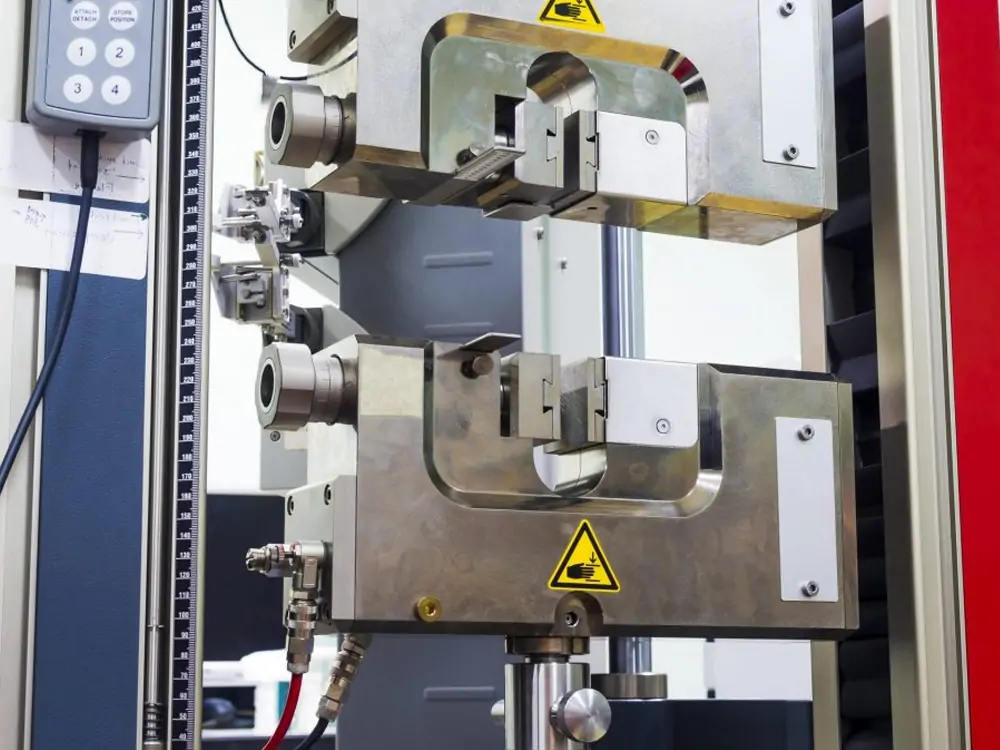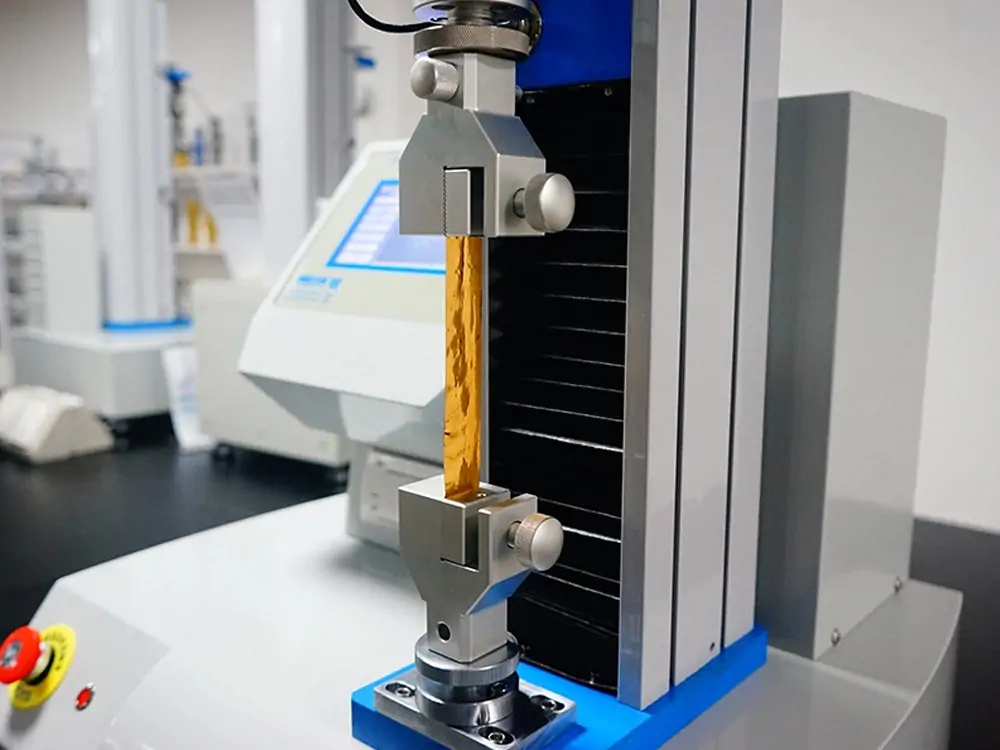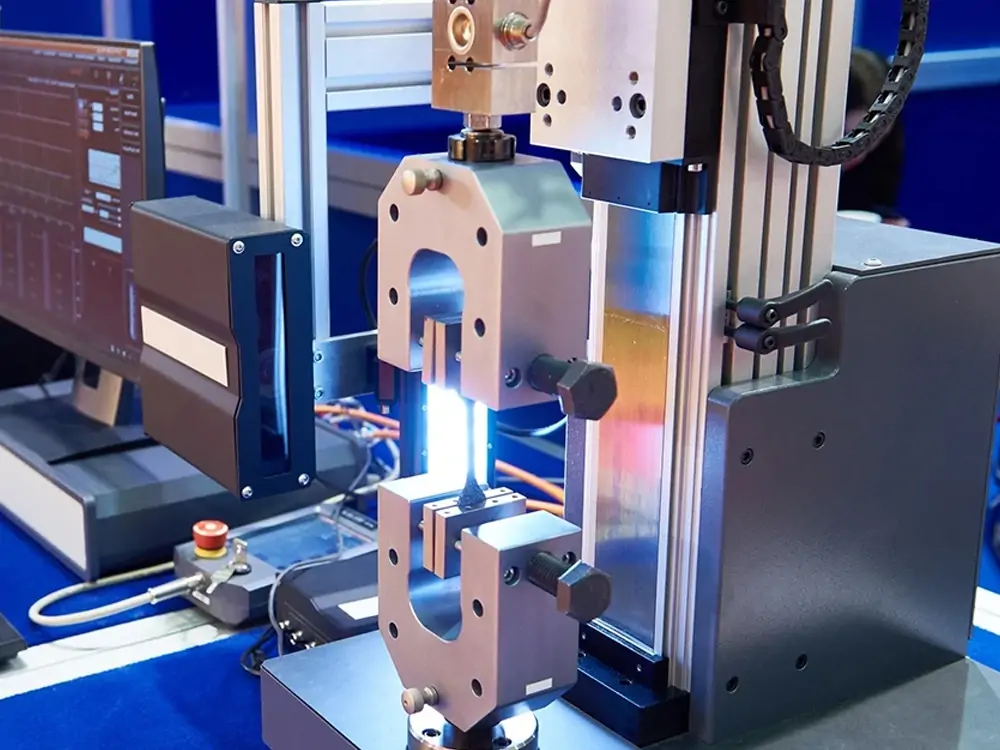Tensile strength is an essential concept in the field of materials engineering. It is crucial in engineering design and material selection and affects many daily life decisions. From buttons to car parts, from building structures to airplane wings. Applications for the tensile strength of materials can be found everywhere. It reflects the stability and reliability of the material when subjected to stress. Tensile strength testing is, therefore, critical to ensure product safety and performance.
This article will delve into the concept of tensile strength. From basic principles to practical applications. It can help readers better understand the significance and impact of this critical parameter. We will discuss the definition of tensile strength, how to measure it, and the factors that influence it. You may be an engineer, manufacturer, or just a consumer. Understanding the basics of tensile strength can help you make more informed decisions.
What is Tensile Strength
Define Tensile Strength
Tensile strength is often referred to as “strength.” It is a fundamental mechanical property of materials. It can measure their ability to withstand a pulling or stretching force without breaking or deforming. It is defined as the greatest axial (along the length) stress that a material can fight while being stretched or pulled before it fractures or fails.
In practical terms, tensile strength is a critical parameter used to test the suitability of a material. It can test various engineering applications. Such as designing structures, manufacturing components, or selecting materials for specific uses. A material with high tensile strength can withstand greater forces without breaking. So, it is desirable for applications where durability and load-bearing capacity are essential.
Tensile strength is determined through standardized testing procedures. It usually involves the application of an increasing tensile force to a sample of the material until it reaches its breaking point. The most significant force exerted is divided by the original cross-sectional area of the specimen. You can then find the tensile strength of the material. This property is essential for material selection. Like construction, automotive, aerospace, and manufacturing. Because it ensures the safety and reliability of engineered products and structures.
Tensile Strength Units
In the International System (SI), tensile strength is usually measured in Pascal (Pa) units. It is expressed as force per square meter (m^2), Newton/square meter (N/m^2). Therefore, 1 Pascal is equal to 1 Newton/square meter.
In the imperial unit system, tensile strength is usually expressed in pounds-force per square inch (psi). It represents force per square inch.
How to Measure Tensile Strength
Measuring the tensile strength of a material is usually done using a tensile test. It is a standardized test method used to determine the performance of materials under tension. The following are general steps for measuring the tensile strength of a material.
Sample Preparation
- Prepare standardized tensile specimens from the material to be tested. It is usually a long strip with two parallel ends to be stretched on a testing machine.
- Determine the appropriate specimen size and geometry based on the selected material and testing standard.
Install Specimen
Properly mount the specimen in the clamping device of the tensile testing machine. Ensuring the length and cross-section of the specimen are accurately measured. It can ensure that the specimen does not slip or twist.
Apply Tensile Force
- Using a tensile testing machine, begin loading the specimen with gradually increasing tensile forces. Stretching force can be applied at different speeds, and stretching is usually performed at a certain speed.
- During this process, the elongation of the specimen and the applied tensile force are measured. These data are usually recorded on a time basis for later analysis.
Test End And Breakpoint
Continue loading the specimen until the specimen breaks or reaches the desired endpoint. The breaking point is usually when the specimen begins to neck (become smaller in cross-section).
Data Analysis
Tensile strength is calculated from the recorded tensile force and elongation data. Tensile strength is usually the largest stress value achieved in a test. The following formula can calculate it:
σ = F/A
Among them, σ represents the tensile strength. F represents the most significant tensile force exerted on the specimen during the test. A means the initial cross-sectional area of the specimen.
Record And Report Results
Document test results and report to appropriate standards and units. Typically, tensile strength is reported in pascals (Pa) or pounds-force per square inch (psi).

Effect of Tensile Strength on Different Materials
Tensile strength is a critical mechanical property parameter of a material. Many factors affect different materials. It depends on many factors. Such as the type of material, organizational structure, preparation method, and environmental conditions. Here are some common factors that affect the tensile strength of different materials.
Material Type
- Metal: Metallic materials generally have high tensile strength. Their atomic structure allows strong bonds between atoms, like metallic bonds. The tensile strength can vary significantly between different metals.
- Plastics: Plastics generally have low tensile strength. Because their molecular structures are more prone to slipping or breaking. Other types of plastics have different tensile strengths. Such as polyethylene, polypropylene, and polyvinyl chloride.
- Ceramic: Ceramic materials usually have high strength. But they are often brittle materials that break easily.
- Crystal structure: Crystalline materials typically have higher tensile strength. Because an ordered lattice structure makes the interaction between atoms or molecules stronger.
- Amorphous materials have lower tensile strength. The molecules are arranged irregularly because they do not have a well-defined lattice structure.
Temperature And Environment
- Temperature has a significant effect on tensile strength. In general, the tensile strength of materials may be reduced at elevated temperatures. High temperatures will cause the vibration of atoms or molecules to increase. Thereby, it can weaken the structure of the material.
- Environmental conditions can also affect the tensile strength of materials. Such as humidity and chemical media. Certain materials may be more sensitive to moisture or certain chemicals. It may result in a decrease in tensile strength.
Processing And Preparation Methods
The processing and preparation methods of a material have a significant impact on its tensile strength. For example, heat treatment, cold working, alloying, and other processes can significantly change the structure and properties of materials, including tensile strength.
Material Defects
Defects in materials can significantly reduce tensile strength. Such as cracks, inclusions, or holes. These defects act as stress concentration points that can easily cause the material to crack.
In general, the tensile strength of different materials is affected by many factors. These include type of material, structure, handling methods, and environmental conditions. Therefore, understanding and considering these factors are fundamental in engineering and materials science. It ensures that the selected material suits the specific application’s requirements.
Tensile Testing Machine
Components of Tensile Tester
A tensile testing machine is a device used to measure the tensile properties of materials. It usually consists of many components. They can perform tensile tests and record related data. The following are the main components of a tensile testing machine.
Load Frame
The load frame is the main supporting structure of the tensile testing machine. It withstands the tensile force exerted during the test. Typically, it consists of a solid metal structure that can stably support the specimen and the testing process.
Specimen Grips
These devices are used to clamp the specimen to ensure uniform tensile force on the specimen during testing. The design of the holding device varies depending on the type of test and specimen geometry.
Tensile Loading System
This system is used to apply tensile force to the specimen. It usually includes an electrically or hydraulically driven mechanical system to create tensile stress. They can ensure that the applied force increases during the test.
Displacement Measurement Device
The displacement measuring device is used to measure the specimen’s elongation accurately. It is usually achieved using a scale, encoder, or displacement sensor attached to the specimen.
Force Sensor
Force sensors are used to measure the tensile force exerted on the specimen. These sensors typically use load cells, strain gauges, or other sensing technology to convert applied forces into electrical signals that can be recorded and analyzed.
Control And Data Acquisition Systems
The control system manages the conduct of the test. These include loading speed, test end conditions, and data collection. Data acquisition systems are used to record force and displacement data during testing. It is usually in graphic or numerical form.
Test Software
Experimental software is often integrated with control and data acquisition systems. It monitors test progress, analyzes data, and generates test reports. These software typically provide real-time data visualization, processing, and storage capabilities.
Safety Devices
Tensile testing machines are usually equipped with safety devices to ensure the safety of test operators. Such as emergency stop buttons, safety barriers, doors, and shutdown systems.
The components listed above constitute the main structure of the tensile testing machine. They work together to perform standard tensile tests and record data to check the tensile properties of materials. This equipment is widely used in materials research, quality control, engineering design, and manufacturing.
Importance of Tensile Test Machine
Tensile testers are essential in science, engineering, manufacturing, and quality control. Its importance is reflected in the following aspects.
Material Performance Evaluation
Tensile testing machines are used to measure the tensile properties of materials. These include vital parameters such as tensile strength, yield strength, elongation, and elastic modulus. These parameters are critical for material selection, design, and engineering applications.
Materials Research And Development
Scientists and engineers use tensile testing machines to study materials’ properties, characteristics, and behavior. It helps develop new materials, improve material properties, and advance scientific research.
Quality Control
Tensile testing machines are widely used in the manufacturing industry. It can ensure product consistency and quality. By inspecting the tensile properties of raw materials, components, and finished products, manufacturers can identify any defects or changes and take corrective action.
Engineering Design
Engineers use tensile testing machines to check the suitability of materials. It ensures that components and structures are designed to withstand the required tensile loads. It helps ensure product safety and reliability.
Material Specification Compliance
Tensile testing machine data is often used to verify and follow material and product specifications. It can ensure they meet the requirements of regulatory and industry standards.
Failure Analysis
Tensile testing machines can analyze accidents, malfunctions, or failure events. By testing the tensile properties of damaged components or materials, the cause and mechanism of failure can be determined.
Quality Improvement
By continuously monitoring and testing tensile properties, manufacturers and engineers can identify opportunities for material and product improvements. It improves performance, reduces waste, and lowers costs.
Research New Materials And Applications
In materials science and engineering, tensile testing machines can test the properties of new materials. It can develop innovative application areas. Examples include high-performance materials, biomedical materials, and nanomaterials.

How to Optimize Tensile Strength
Several approaches can be taken to optimize the tensile strength of a material. These methods may need improvements in material preparation, processing, and design. Here are some possible strategies.
Select Appropriate Materials
Selecting materials with the potential for high tensile strength is the first step in optimization. Different materials have different mechanical properties. It is, therefore, crucial to select materials based on the specific application’s requirements.
Controlling Crystal Structure
The crystal structure has an essential influence on the mechanical properties of materials. The tensile strength can be enhanced by controlling the crystal structure through appropriate heat treatment and crystal growth conditions.
Improve Purity
Purity has a significant impact on the performance of materials. The material’s tensile strength can be increased by reducing impurities and defects content.
Precision Processing
Precision processing methods can increase the strength of the material. Such as cold drawing, rolling, forging, and heat treatment. These methods can improve the crystal structure and reduce internal defects.
Control Grain Size
Smaller grains generally have higher tensile strength. Through grain refinement methods, the size of the grains can be reduced, thereby increasing the strength. Such as annealing and isothermal treatment. Thereby, it can increase the strength.
Adding Alloying Elements
In some cases, adding alloying elements to a material can significantly increase tensile strength. These alloying elements can form solid solutions or strengthening phases. Thereby, it can increase the strength of the material.
Controlling The Crystal Orientation Of The Material
Through processing methods, the orientation of the crystals can be controlled. It can give them greater strength in the tensile direction.
Optimize The Heat Treatment Process
Appropriate heat treatment process can improve the mechanical properties of the material. For example, aging treatment can increase the strength of an alloy.
Use Proper Design
Choosing appropriate geometry, dimensions, and connections in engineering design can reduce stress concentrations. It also can increase the tensile strength of a material.
Quality Control
Strict quality control and inspection ensure materials meet specifications. It can reduce the number of defects and substandard products.

Conclusion
When we look at the tensile strength of materials, it is not just the subject of an article. It represents one of the core concepts in materials science and engineering. Tensile strength is not just about the properties of materials. It is also involved in designing, manufacturing, and using countless objects daily. Understanding the importance of tensile strength can help us make better material choices and improve engineering designs. It also can ensure product reliability and safety.
In this article, we explore the definition of tensile strength, how it is tested, and the factors that influence it. We understand that tensile strength is not only related to the type and organizational structure of the material. It is also associated with the material’s processing process, temperature, and environmental conditions. Therefore, optimizing tensile strength requires careful consideration of various factors and detailed design and manufacturing.